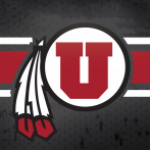Big 10/SEC Rejects
Welcome to Ute Hub › Forums › Utah Utes Sports › Football › Big 10/SEC Rejects
- This topic has 16 replies, 7 voices, and was last updated 2 years, 4 months ago by
belli1976.
-
AuthorPosts
-
-
belli1976
ParticipantWhat is preventing the Big 10 and SEC creating a true super conference by shedding their current lower tiered programs? I am total novice on conference by laws and contracts. Once a school is in a conference is their anyway to kick them out?
The BIG10 could shed Rutgers and Maryland first. Utah, UW, UO and UA bring more to the table. Then next two would be Northwestern and Minnesota.
The SEC is a tougher argument, but Vandy and Missouri would likely be the first out. And then find upgrades.
-
 Milton VandersliceParticipant
Milton VandersliceParticipantVandy and Northwestern offer way more in side benefits (such as access and influence in the business world) than they do on the field/court. Very similar to Stanford in the Pac.
-
belli1976
Participant@Milton – valid point. If that is the case, why isn’t Vandy and Northwestern getting massive NIL deals? You could ask the same question on Stanford.
Their alumni like supporting the conference but not the schools?
Not picking a fight but that is sniff test that isn’t lining up to me.
-
 Milton VandersliceParticipant
Milton VandersliceParticipantWhy should Vandy and Northwestern invest like an upper-tier team? They get the same payout as Georgia/Bama/tOSU.
-
 Milton VandersliceParticipant
Milton VandersliceParticipantI dug deeper into this question, and Vandy is in the SEC for another critical reason besides their baseball natty.
You need at least one private university in a conference since they are not subject to FOIA requests. All negotiations, contracts, and sensitive info can be routed through Vandy. You have no secrets if you have all public schools in a conference. I’m sure the SEC doesn’t have anything to hide, but if they did, then Vandy is just the kind of Skull and Bones level school to take care of things for you.
-
-
 2008 National ChampParticipant
2008 National ChampParticipantAthletic department revenues/expenditures are a drop in the bucket for a top-tier academic institution. Vanderbilt and Northwestern bring in billions – with a B – in research grants which the other schools in the conference get access to. Rutgers is another school that was brought in due to it’s academic excellence. B1G/SEC schools are more than happy to share their TV contracts with schools that regularly underachieve in sports while loading up the academic coffers.
I’m not sure why people continually overlook “follow the money” when making assumptions about why things happen the way they do.
-
-
-
 UteFanaticParticipant
UteFanaticParticipantI actually think this is the inevitable outcome. The contracts have language that allows for dissolution if enough conference members vote for it. For example, the ACC could blow up if 8 members vote to do so.
The B1G and SEC will vote to break up, and the re-form with the best teams. My guess is this happens within the next decade.
-
 D TParticipant
D TParticipantThe real question is, why did the B1G invite Rutgers/Maryland in the first place?
They invited them to capture the markets…..They’re not going anywhere.
-
 UteFanaticParticipant
UteFanaticParticipantTV market sizes were one of the biggest (if not the biggest) drivers of expansion back then. Doubt they’d even be considered by any major conference now. Other factors are much more important.
-
 D TParticipant
D TParticipantSuch as? Media contracts drive things & those are valuable assets, more important than anything else.
-
 UteFanaticParticipant
UteFanaticParticipantViewership trumps all. For example, Oregon resides in a relatively small market but regularly draws TV viewership on par with teams like USC, Florida, and Clemson.
Also, rivalries. ESPN executives have recently said that rivalries and rivalry games are major factors for determining value of TV deals.
So, while market sizes are a factor, they aren’t the the primary driver like they used to be.
-
 UtahParticipant
UtahParticipantYes…and no. Cable subcriptions trumps all. That’s where the money comes from. The reason why Maryland and Rutgers were so valuable is that they are in huge markets. Then, when you create the B1G Network, you get it on the basic cable package. Comcast raises their price by $2/month to pay for the channel and you get a cut of that.
With cable subscriptions falling, that golden goose isn’t as valuable as it once was. And the question becomes, what happens moving forward? How does ESPN generate that extra $2/month per person.
So, yeah, you need viewership to justify the network being on basic cable packages (which was Larry Scott’s biggest failure, THAT is why the Directv issue was so problematic. PAC-12 viewers weren’t willing to cancel Directv to get the PAC-12 Network, so Directv never added it and the PAC-12 lost 1/3rd of it’s projected revenue). But being the top rated game of the week was never that big of a deal. The bigger deal is, “how many people will cancel Comcast to go to Dish if we drop XXXX Network?”
Also, it’s why Oregon isn’t as valuable as you think it is. They don’t bring a huge number of subscribers. Any fan of Oregon in Memphis Tennessee…there isn’t enough of them there that will pay extra for the PAC-12 Network, so the PAC-12 Network won’t ever be on basic cable in Memphis.
And Portland is so small, adding the P12N to basic cable isn’t going to generate that much revenue.
And it’s why SDSU and Washington State are more valuble than you think. WSU has a TON of alum in Seattle, a city with 800,000+ people and a metro population of 4,000,000. Portland has 600,000 and a metro of 2,500,000. You’ll get more subscribers if you think WSU can get your network on basic cable than you will with Oregon.
And San Diego State. Their city has 1,400,000 people and the metro has 3,300,000 people in it. That is HUGE. If you can get the P12N on basic cable there, they bring a TON more money than Oregon does. And if you can get the P12N on basic cable in LA because of San Diego, that’s an additional 19 million people you can sell cable to.
Right now, Oregon isn’t nearly as valuable as you’d think, because of this.
NOW, where this could change is if sports fans, college football fans in general, start streaming and drop cable. Then all the sudden you can’t charge 19 million people in Los Angeles $2 a month to get the P12N on their basic cable.
THEN you are only getting money from each person who subscribes to that channel and only that channel. NOW Oregon becomes a lot more valuable, because you will get a lot more people signing up for the P12N to watch Oregon than you would WSU or SDSU.
But that isn’t where we are right now. Right now, cable is king, and adding San Diego, keeping the Los Angeles market and adding Dallas, is MASSIVE for the P12N.
Dallas alone has almost 8 million people.
-
-
-
-
-
KoolWhitt
ParticipantI am also not familiar with the contracts but I don’t think that is what is preventing the B1G and SEC from doing what you are suggesting. Contracts can be breached. The only question is what would be owed to the non-breaching parties (i.e. the schools given the boot). Even if those sums were significant, presumably these mega conferences could negotiate ways to mitigate the pain of paying them (for example, not permitting the new schools to receive full payouts until the old schools were paid what was owed to them under the old deal; would Utah, for example, take $0.25 on the dollar for the first ten years (until, say, Rutgers was paid off) in order to be in the “new and improved” B1G? I’m betting they would in a heartbeat).
I think the bigger issue, and what is really preventing this, is that these conferences know that they don’t have to have EVERY top 25 football program between the two of them in order to dominate the sport and the ratings. In fact, the heaviest hitters in each conference probably don’t want their schedules to get any harder. You can’t have an absolute murderers row of a schedule; you need a few “cupcake” games to balance things out.
Imagine, for example, you are Alabama, and someone says: “Hey, what if we got Vandy and Mizzou off your schedule every year and we replaced them with Clemson and Florida State?”
As football fans we would love having two more marquee matchups to watch every year, and undoubtedly TV execs would salivate, but for the ADs, coaches, and players that’s kind of a nightmare. Hence why it isn’t happening. The schools are the ones who would need to initiate that, and the schools likely recognize that there is a law of diminishing returns at play here.
-
KoolWhitt
ParticipantI guess in sum I would say that the B1G and SEC don’t have to do what you suggest because their legitimacy as the cream of the crop conferences is unassailable. Why go through the headache?
The ACC and the Big XII could think about this though. If there are 4 legit super conferences (B1G, SEC, and the ACC and Big XII having been bolstered by the remnants of the PAC), then the conference championship games become de facto national quarter finals. Conference champs meet in the semis, and so forth. Historic playoff problem effectively solved.
Just out of curiosity: if the above held true, and the 4 power conference champions made the national semis, would you rather the Utes be in the current Big XII plus the 4 corner schools or the B1G with the four schools you mentioned dropped but with UW, UO, UA, and Utah added in? Utah would consistently compete for the Big XII title but would NEVER win that B1G conference and would thus be perennially shut out of the playoffs. Week to week in the B1G would be more fun though.
-
 D TParticipant
D TParticipantYou don’t believe we could ever be a factor in the B1G?
-
 UteFanaticParticipant
UteFanaticParticipant.
-
KoolWhitt
ParticipantI think our ceiling in that version of the B1G would be about like Iowa.
Tough, physical, bring-your-lunch-pail -type team that everyone respects as a difficult test. Often featured in the top 20, spends a few weeks every few seasons in the top 10, wins the division once every three or four years, but never wins the conference.
-
-
-
-
-
AuthorPosts
- You must be logged in to reply to this topic.
